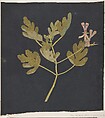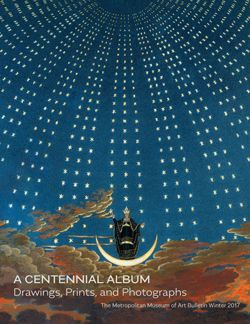Botanical Study
Mary Delany British
Not on view
The celebrated diarist and amateur artist Mary Delany ranks among the most accomplished paper-cutters of all time. She developed the technique of "paper-mosaick" at the age of seventy-two, when her diminishing eyesight hindered her embroidery. Working to scale directly from a plant specimen, Delany cut and assembled dozens or even hundreds of minute pieces of colored tissue paper to create a single image of precise botanical accuracy. Encouraged by King George III and Queen Charlotte (who took a strong personal interest in her skills and sent her work to the Royal Botanic Gardens at Kew), Delany produced nearly a thousand sheets for her "Flora Delanica" in a little more than a decade. Typically, she labeled her work on the back and arranged her collection (now in the British Museum) according to Carl Linnaeus's sexual system of plant classification. The present example of a type of geranium is not identified, perhaps because given to Lord and Lady Bute on a visit to Luton Hoo, where she worked from specimens in the gardens. It came to the Museum inserted into an album that belonged to John Stuart, 3rd earl of Bute, containing designs for the gardens and buildings at Kew.
Due to rights restrictions, this image cannot be enlarged, viewed at full screen, or downloaded.


